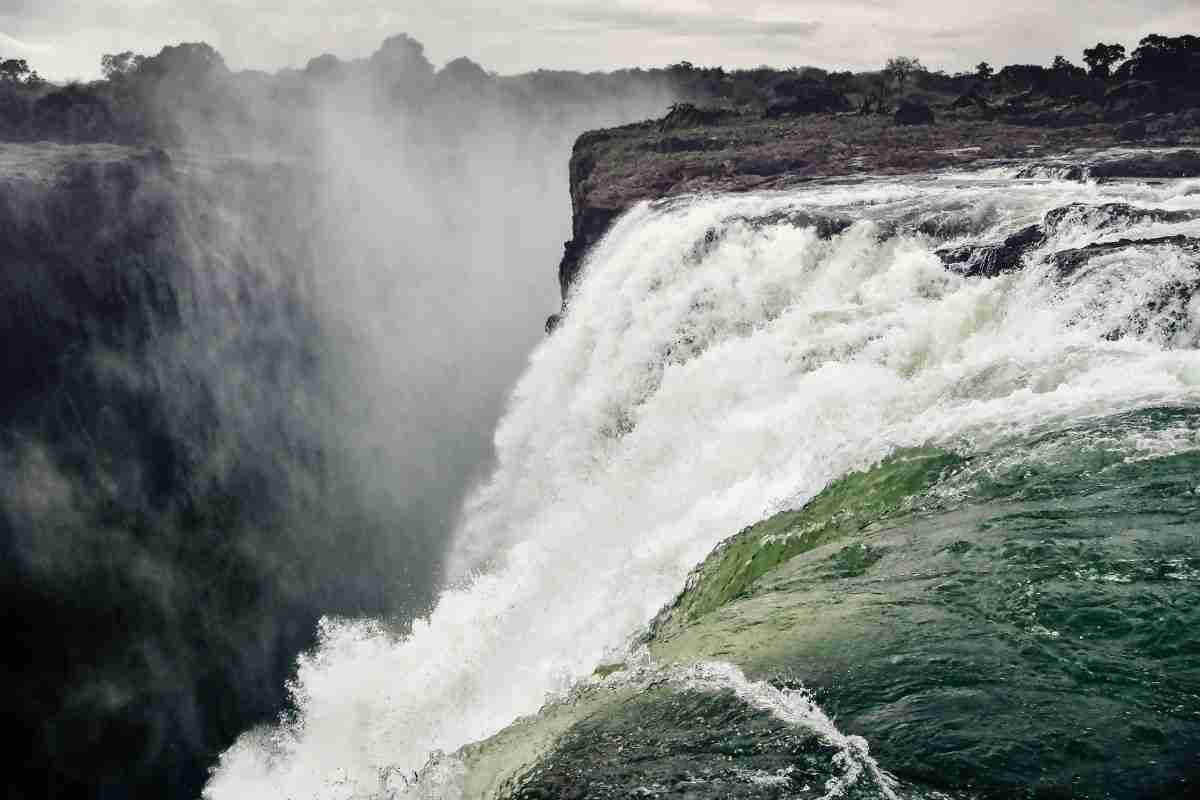When David Livingstone discovered the beautiful Victoria Falls, he probably didn’t believe his eyes. After all, he was there quite by accident. Born in 1813 in Scotland, he studied as a doctor with the idea of going on a mission to Asia. He had to change plans due to a war and instead found himself in southern Africa running walking missions. Between one humanitarian mission and another, he devoted his free time to exploring that great river – the Zambezi – which fascinated him. Following its course, he was the first European to see those spectacular waterfalls which he named after the English queen, Victoria.
Victoria Falls a spectacle of nature
The Victoria Falls are located about a third of the course of the Zambezi River, starting from upstream, and arrive after a long path already formed by small and large waterfalls. The great leap occurs along a huge tectonic rift that extends for 2 km with a maximum height of 128 meters.
Depending on the seasons and the flood of the river, the waterfalls have a different flow. What never changes, however, is the cloud of water vapor and the intense noise that can be heard even at enormous distances. Precisely this “white smoke” and this noise determined the indigenous name of the waterfalls: Mosi-oa-Tunya, the thundering smoke.
Inside the enormous escarpment into which the waterfalls do fall, the Zambezi then continues to flow entering a further series of gorges, among which the most dangerous is the “boiling pot” (so called because of the numerous whirlpools). Finally, the river exits the canyon onto a basalt plain.

Tourism in and around Victoria Falls
The main source of tourism for all of southern Zambia, the Victoria Falls are part of a beautiful natural park that bears their ancient name. Mosi-oa-Tunya National Park is also home to safaris that lead to white rhinos, elephants, giraffes, zebras and cheetahs.
To manage the tourism of this area are the tour operators and the structures of Livingstone. The city closest to the falls is also the one named after the explorer who discovered it. Livingstone is worth a visit as it has an interesting history – it was the capital of the Zambian colony (then called Northern Rhodesia) from 1911 to 1935, before handing over to Lusaka. Among the things to admire here, the Livingstone Museum, which collects the historical and naturalistic testimonies of the region and of the whole of Zambia. And the Crocodile Park, another unmissable destination.
About a four-hour drive from Livingstone brings you to a large lake, Lake Kariba. This body of water opens to the east and is surrounded by small towns (the closest ones: Siatwinda, Mibizi, James, Binga) and protected reserves such as the Sijarira Forest and – much more distant – the Matusadona and Charara parks. Crossing just past the falls, less than 2 km from Livingstone, you enter the state of Zambezi and can visit the Zambezi National Park.
How to get there, where to stay
To get to Victoria Falls you can land directly at Livingstone International Airport. This airport is well connected with Lusaka and with other African capitals, as well as with the minor airports of Zambia.
Livingstone and the neighboring towns offer numerous accommodation options for tourists who want to admire the waterfalls. Often these are traditional-style lodges, but there is no shortage of hotels (Royal Livingstone, Crescent Lodge, Avani Victoria Falls Resort). MAIN PHOTO BY SIMON MATZINGER



